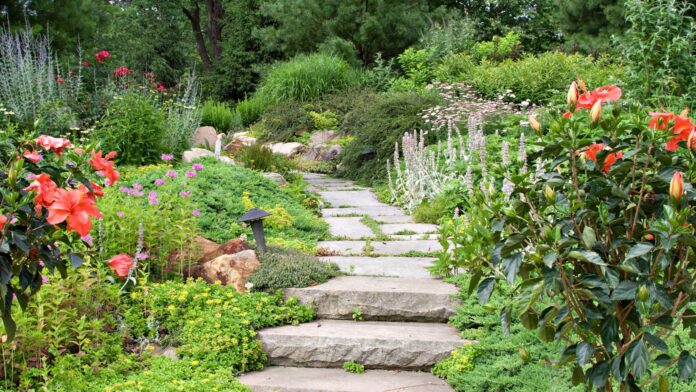Pathways are the unsung heroes of a well-designed garden. They not only guide visitors through your outdoor space but also add structure, accessibility, and visual appeal. Choosing the right materials and widths for your garden pathways is crucial for a seamless and enjoyable experience. In this article, we’ll explore various materials, recommend widths, and provide insights to ensure your garden is easy to maneuver and maintain without sacrificing valuable space.
Choosing the Right Materials
1. Gravel:
- Advantages: Cost-effective, easy to install, provides good drainage, and offers a charming rustic look.
- Considerations: Regular replenishing may be needed, and it can be challenging for wheeled equipment.
2. Stone Pavers:
- Advantages: Durable, aesthetically versatile, and available in various colors, shapes, and textures. They allow for creative patterns.
- Considerations: Professional installation may be required for a level surface.
3. Brick:
- Advantages: Classic and timeless, provides a warm, inviting look, and can be laid in different patterns for visual interest.
- Considerations: Requires proper leveling and maintenance to prevent unevenness.
4. Concrete:
- Advantages: Highly customizable, can be stamped or stained to mimic natural stone or brick, and offers a smooth surface for easy walking.
- Considerations: Proper curing and sealing are essential for longevity.
5. Wood:
- Advantages: Offers a natural, organic feel, particularly suitable for rustic or cottage-style gardens. Can be used for bridges or raised walkways.
- Considerations: Requires regular sealing or staining to prevent rotting.
Recommended Pathway Widths
- Primary Pathways (Main Walkways): 3-4 feet wide. This allows two people to comfortably walk side by side. For wheelchair accessibility, a width of at least 4 feet is recommended.
- Secondary Pathways (Access to Specific Areas): 2-3 feet wide. These paths are narrower but still provide ample space for single-file movement.
- Decorative or Narrow Paths: 1-2 feet wide. These paths are primarily for aesthetics or to create intimate, secluded spaces within the garden.
Ensuring Accessibility and Maneuverability
1. Curved Pathways:
- Create gentle curves in your pathways to prevent a straight, rigid appearance. Curved paths not only add visual interest but also slow down the walking pace, encouraging visitors to appreciate the garden.
2. Clear Line of Sight:
- Ensure that pathways have clear sightlines, especially at junctions or corners. This improves safety and helps visitors navigate without obstruction.
3. Proper Lighting:
- Incorporate lighting along pathways, especially if you intend to use the garden after dark. This can be achieved through lanterns, solar-powered lights, or strategically placed fixtures.
4. Transitions and Grades:
- Gradual slopes and well-designed transitions between different surfaces ensure easy maneuverability, particularly for those with mobility aids.
Space-Efficient Pathway Design
1. Planting Along the Edges:
- Soften the edges of pathways with low-growing plants or ground covers. This maintains greenery without encroaching on walking space.
2. Vertical Gardening:
- Utilize vertical space with trellises, hanging planters, or wall-mounted gardens. This maximizes planting area without sacrificing pathway width.
3. Multi-Functional Elements:
- Incorporate seating, water features, or decorative elements along the pathway. This adds functionality while maintaining flow.
Conclusion
Well-planned pathways are essential for creating a garden that is not only visually appealing but also practical and easy to navigate. By carefully selecting materials, considering widths, and implementing design strategies, you can ensure your garden’s pathways enhance the overall beauty and functionality of your outdoor space. Remember, a well-designed pathway invites exploration and encourages visitors to fully experience the magic of your garden.
Let us know if you have any questions or tag us on Instagram with your success stories.








